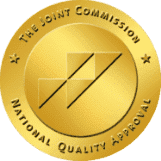- About Us
- Blog
- Areas We Serve
- Virtual IOP
- Our Programs
- Tour
- Mental Health Treatment
Domestic Violence and Substance Abuse
- Home
- Domestic Violence and Substance Abuse
What is Domestic Violence?
In the U.S., more than 1 in 3 women (36.4% or 43.6 million) will experience some type of sexual violence, physical violence, or stalking by an intimate partner during their lifetime.1 A similar number of women will experience psychological aggression by an intimate partner during their lives. According to the 2015 National Intimate Partner and Sexual Violence Survey, similar rates have been reported for men who experience intimate-partner violence, however, women are more likely to be targets of rape or attempted rape.
Domestic violence, also known as intimate-partner violence is “an ongoing pattern of power and control in romantic relationships that is enforced by the use of abusive tactics, such as intimidation, threats, physical or sexual violence, isolation, economic abuse, stalking, psychological abuse, and coercion related to mental health and substance use.”2 The main forms of domestic violence are:
Psychological/Emotional Abuse
Psychological abuse can occur verbally or non-verbally with the intention of harming another person mentally and emotionally, exerting control over the other person, making the other person doubt their own experience, and more.
Psychological abuse can include:
- Blaming them for being abusive
- Blaming them for your problems
- Constant monitoring
- Controlling them/making decisions for them
- Controlling/jealous behaviors
- Degradation/criticism
- Getting angry when they spend time with other people
- Intentionally embarrassing them
- Isolating them from friends and family
- Making false accusations
- Mental abuse
- Reading their emails/texts
- Shaming/bullying
- Starting rumours
- Threatening to expose personal information/photos
- Threatening to harm them
- Threatening to commit suicide
- Verbal insults
- Yelling
Gaslighting
A behavior that makes someone feel like they can’t trust their instincts, judgments, and reality; making them question everything they believe and therefore making them dependent on their abuser.
Methods of gaslighting include:
- Refusing to listen to your thoughts and feelings
- Telling you that you’re overreacting
- Telling you that you’re making things up or are remembering them incorrectly
- Making you feel guilty about being upset
- Changing the subject when you express your thoughts and feelings
- Convincing you that their abusive behavior isn’t abusive
Physical Violence
Physical violence involves one person trying to hurt or injure another person. It is the most recognizable form of domestic violence as it typically leaves a physical mark or injury.
Physical violence includes:
- Biting
- Breaking your property
- Grabbing their face or neck
- Hitting
- Holding you down
- Interfering with your driving
- Kicking
- Not allowing calls to the police or calls for help
- Blocking the doorway/driveway to prevent leaving
- Punching
- Shoving
- Slapping
- Spitting
- Suffocation
- Throwing things at you
- Using a weapon
Sexual Violence
Sexual violence occurs when one person attempts to force another person to take part in a sexual act against their will/without their consent.
It can involve:
- Forcing them to have a baby
- Forcing them to have an abortion
- Forcing them to have sex with other people
- Forcing them to watch pornography
- Knowingly exposing them to HIV or other STIs
- Rape
- Restricting access to birth control
- Sexting
- Sexual assault
- Sexual touching
- Threats if uncooperative
Financial Abuse
Financial abuse occurs when someone tries to control another person’s ability to obtain, use, and maintain financial resources and financial stability. It is the exertion of power over someone’s finances, which can be extremely powerful in keeping someone in an abusive relationship when they don’t have the financial means to get out of the relationship.
Financial abuse includes:
- Access to their own money restricted
- Money stolen
- Restricted access to shared money or resources
- Forcing the person to identify where they spent all of their money
- Not allowing them access to shared bank accounts
- Putting assets in the abuser’s name only
- Keeping control of vehicles, cars
- Preventing you from finding work
- Preventing you from getting to and from work
- Threatening you if you find work or go to work
What is Trauma Bonding?
Trauma bonding occurs when you mistake abuse for love and believe that your partner’s controlling actions are a result of them caring about you and not wanting to lose you.3 It can be hard for survivors of abuse to recognize that the abuse is happening because they are often being emotionally and psychologically manipulated.
Trauma bonding results in an attachment bond where the abused becomes attached to their abuser, often because they are made to be afraid of what life would be like without their abuser.3 When you experience abuse from someone you have already experienced love from, it can be hard to recognize the abuse and admit it.3
Many people who are abused hold onto a fantasy of being loved by their abuser, and have a hard time leaving because they believe that one day the abuser will change.3 Trauma bonding is the reason that it is so difficult for people to leave partners who are violent and abusive.
What is Substance Abuse Coercion?
Substance abuse coercion is a form of domestic abuse that involves the coercion and control of substances. Methods of substance abuse coercion involve the abuser forcing the victim to use alcohol or drugs, threatening to report their substance abuse to authorities to punish them, manipulate them, or forcing them to lose custody of their children, preventing a victim from accessing substance abuse treatment as a form of maintaining control over them and forcing a victim into withdrawal by withholding substances from them.
When controlling how the abused partner receives substances and how much and how frequently they use substances, the abused partner becomes dependant on the abuser. By preventing a victim from accessing treatment, the abuser holds control over the victim’s sobriety. Leaving a substance use disorder untreated can result in an overdose and death.
Effects of Domestic Violence and Substance Use Disorders
Being subject to an unhealthy, abusive, and violent relationship can have serious consequences. The effects of domestic violence can be physical and psychological and usually involve short-term effects (such as a physical injury) or long-term effects (such as PTSD or depression). Some of the effects or consequences of experiencing domestic violence are:
- Antisocial behaviors such as lying, stealing, or bullying others
- Anxiety
- Becoming overly dependent on other people
- Depression
- Eating disorders
- Excessive drinking or smoking
- Harder time being intimate with future partners
- Having a hard time trusting people again
- Increased risk of experiencing violent relationships in adulthood
- Injury/death
- Negative body image
- Post-traumatic stress disorder (PTSD)
- STI diagnosis
- Substance use disorders
- Thoughts of suicide/suicide
- Unhealthy behaviours
- Unwanted pregnancy
One of the major effects of domestic violence is battered woman syndrome. This sub-category of PTSD and occurs when a woman develops a belief that she deserves the abuse and can’t escape it.4 When experiencing battered woman syndrome, a woman typically feels denial in that she is unable to accept that she is being abused, and guilt, in which she believes the abuse is her fault.4 This is why so many women stay with their abusers and have a hard time leaving.4 It is important to note that this syndrome can also occur in men, however; it is less common.
Treatment for Domestic Violence and Substance Abuse
Substance abuse and domestic violence are strongly linked and a large number of domestic violence crimes are related to substance abuse. Substance abuse and domestic violence share common factors such as a loss of control, the worsening of abuse over time, denial and shame surround the behavior, and continued behavior despite negative consequences.
The risk of domestic violence also increases when both partners have substance abuse disorders because the victim may not understand how much danger they’re really in, will have a harder time defending themselves physically, and may be less likely to report the violence for fear that they will get in trouble if they are using illicit substances. To get out of an abusive relationship, it is also important to seek treatment for substance abuse and to address the abusive cycle of substance abuse and domestic violence.
The treatment options for individuals who may be suffering from substance abuse and intimate-partner violence are:
Counseling/Therapy
Domestic violence and abuse can cause an individual trauma and PTSD. When abuse occurs for long periods of time, experience extreme toxic stress sets in, and will likely require counseling and therapy to overcome the abuse and trauma experienced. The good news is that there are professionals; social workers, medical professionals, psychologists, and addiction treatment specialists who specialize in domestic violence. These professionals are trained in being able to identify if there are substance abuse problems and or domestic violence problems in their patient’s lives.
Addiction treatment professionals and psychologists can make referrals to law enforcement where it is deemed necessary. Domestic violence can be criminal and in certain circumstances, legal help might be necessary. It can be hard for victims to know where to go or who to reach out to, so treatment specialists can help individuals find the resources they need to seek legal help.
Substance Use Disorder Treatment
Substance abuse treatment includes counseling and therapy in inpatient or outpatient treatment centers. It can also include the administration of medication that is used to help with detoxification and the withdrawal process.
When stopping the use of substances, some unpleasant withdrawal symptoms may occur, such as anxiety, insomnia, sleep problems, nausea, diarrhea, hot and cold flashes, runny nose, excessive sweating, muscle cramps, body aches, goosebumps. Medication can help to reduce withdrawal symptoms, helping with detox from substances.
Women’s and Men’s Shelters
Many abused individuals have nowhere to go; or have experienced financial abuse and don’t have access to money to be able to leave their abusers and live life on their own. Many times, children are involved and there isn’t a means to support their children outside of the home they live in with their abuser. This is why shelters for abused men and women exist, as a safe place to go.
Shelters offer multiple services to abuse survivors to help set up a new life. These services include shelter, food, counseling, medical and legal advocacy, community and prevention education, and services that help victims to find work, find permanent housing, and more.
Domestic Abuse Hotlines
There are numerous crisis hotlines for victims of domestic abuse and sexual violence. Calling into a hotline can be a good option for victims who are afraid to leave their abusers and need assistance in the process.
Conclusion
Overall, 12 step programs can be beneficial for someone struggling with addiction. They can provide support and structure. There are also alternatives to the traditional 12 step program, as well as programs that can help those who have been affected by addiction in loved ones.
If you or someone you know is struggling, there are resources available to get the help you need. You can call Iris Healing® to start today.
Resources
- https://www.cdc.gov/violenceprevention/pdf/2015data-brief508.pdf
- http://www.nationalcenterdvtraumamh.org/wp-content/uploads/2014/09/IPV-SAB-Final202.29.1620NO20LOGO-1.pdf
- https://vawnet.org/material/mental-health-and-substance-use-coercion-surveys
- https://www.semanticscholar.org/paper/The-battered-woman-syndrome%3A-effects-of-severity-of-Dutton-Painter/8d000a8e4159622e98b8a4addf799b6b06da6dcf
Iris Healing® strives to be diligent and prompt in updating the information available on our website. Please note, however, that our treatment modalities and protocols are subject to change at any time. For the most up-to-date details regarding our treatment offerings or other protocols, please contact us: (844)663-4747



